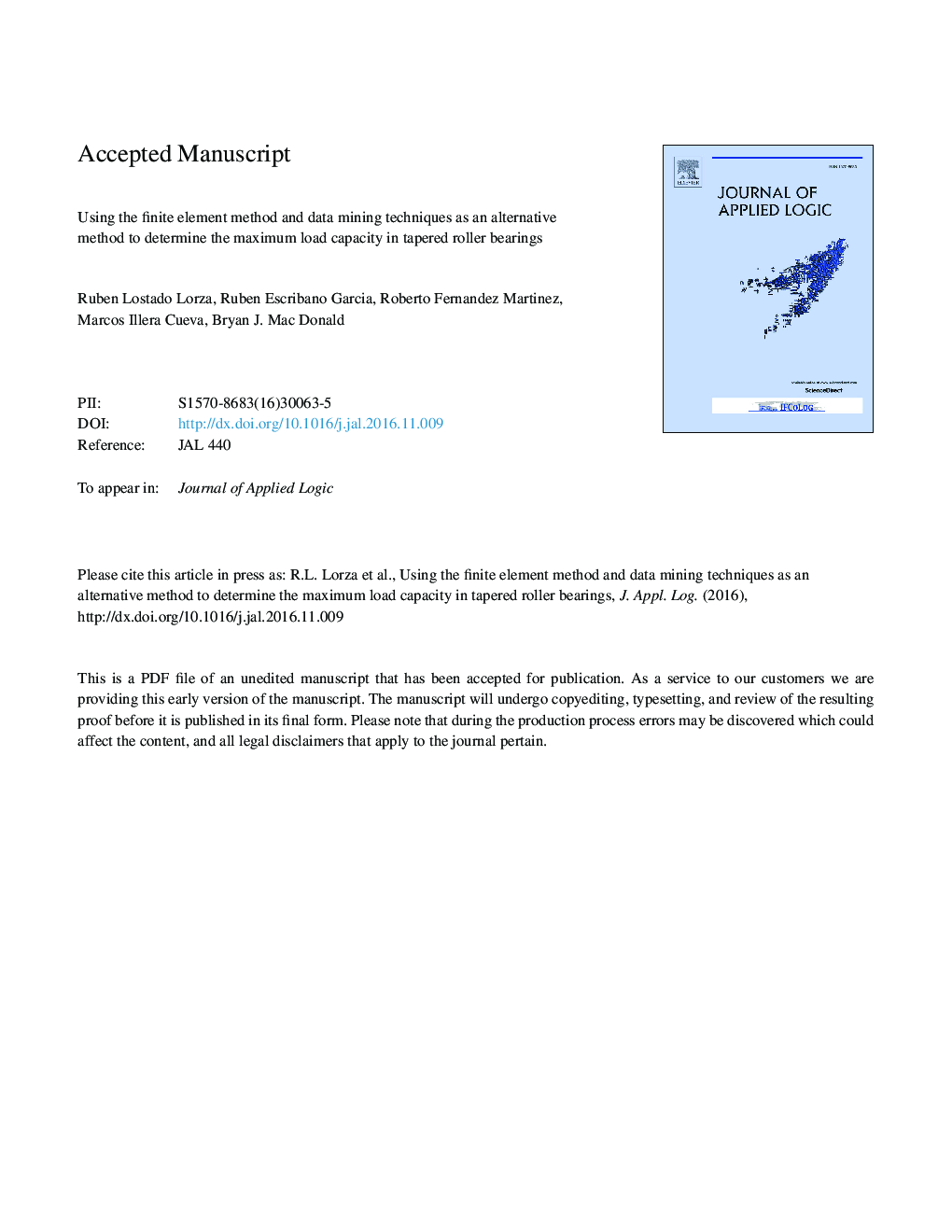| کد مقاله | کد نشریه | سال انتشار | مقاله انگلیسی | نسخه تمام متن |
|---|---|---|---|---|
| 5778219 | 1413706 | 2017 | 15 صفحه PDF | دانلود رایگان |
عنوان انگلیسی مقاله ISI
Using the finite element method and data mining techniques as an alternative method to determine the maximum load capacity in tapered roller bearings
ترجمه فارسی عنوان
استفاده از روش المان محدود و تکنیک های داده کاوی به عنوان یک روش جایگزین برای تعیین حداکثر ظرفیت بار در غلتک های مخروطی
دانلود مقاله + سفارش ترجمه
دانلود مقاله ISI انگلیسی
رایگان برای ایرانیان
کلمات کلیدی
روش عناصر محدود تکنیک های داده کاوی، بهینه سازی، طراحی آزمایش، دو ردیف غلتک مخروطی
موضوعات مرتبط
مهندسی و علوم پایه
ریاضیات
منطق ریاضی
چکیده انگلیسی
Double-row tapered roller bearings (TRBs) are mechanical devices designed to support a combination of preload, radial load, axial load and torque. They are widely used in vehicles for high load and moderate rotation speeds. This combination of loads produces high contact stresses on the bearing raceways that are difficult to calculate, and can cause undesirable defects like fatigue spalling and pitting. In recent decades, the Finite Element Method (FEM) has been used to obtain the distribution of the contact stresses on each of the raceways, although this method has the disadvantage of a high computational cost. The myriad of possible combinations of input loads on the TRB (preload, radial load, axial load and torque) makes it much harder to calculate the distribution of these contact stresses. This paper proposes a methodology that combines the FEM and data mining techniques to determine the maximum load capacity in TRBs. First, a three-dimensional finite element (FE) model was generated according to the real materials' properties, geometry and coefficients of friction of all parts that make up the double-row TRB. Subsequently, a Design of Experiment (DoE) was completed that considered a combination of the mentioned input loads, which were simulated in the FE model. Based on the contact stresses obtained from the FE simulations, a group of regression models - linear regression (LR), Gaussian processes (GP), artificial neural networks (ANN), support vector machines (SVM) and regression trees (RT) - were built to predict the contact stresses ratios that act on each of the row of rollers in the outer raceway of the TRB. Finally, the best combination of input loads was achieved by applying evolutionary optimization techniques based on genetic algorithms (GA) to the best regression models previously obtained. The maximum load capacity of the TRB was achieved when the radial load obtained was a maximum, while the stresses ratios of the two contacts in the outer raceway of the TRB were close to 25%.
ناشر
Database: Elsevier - ScienceDirect (ساینس دایرکت)
Journal: Journal of Applied Logic - Volume 24, Part A, November 2017, Pages 4-14
Journal: Journal of Applied Logic - Volume 24, Part A, November 2017, Pages 4-14
نویسندگان
Ruben Lostado-Lorza, Ruben Escribano-Garcia, Roberto Fernandez-Martinez, Marcos Illera-cueva, Bryan J. Mac Donald,
